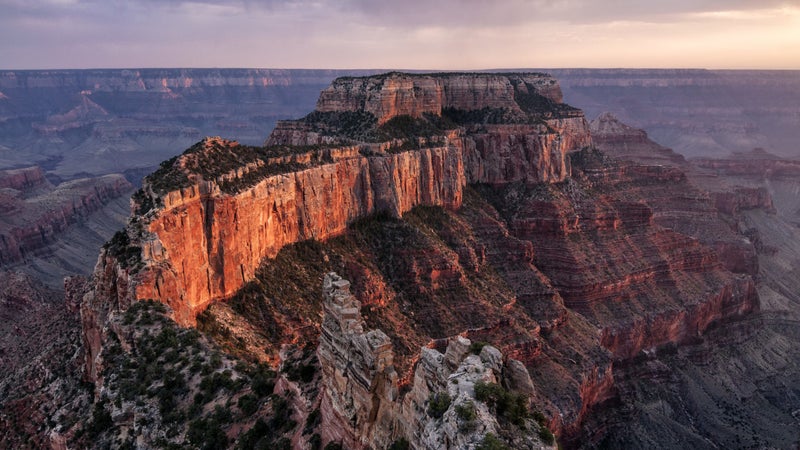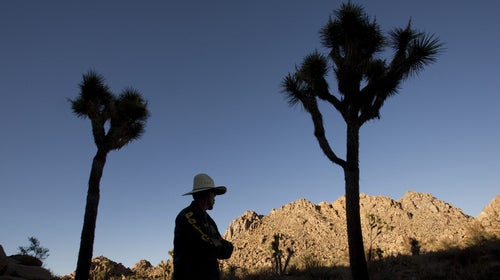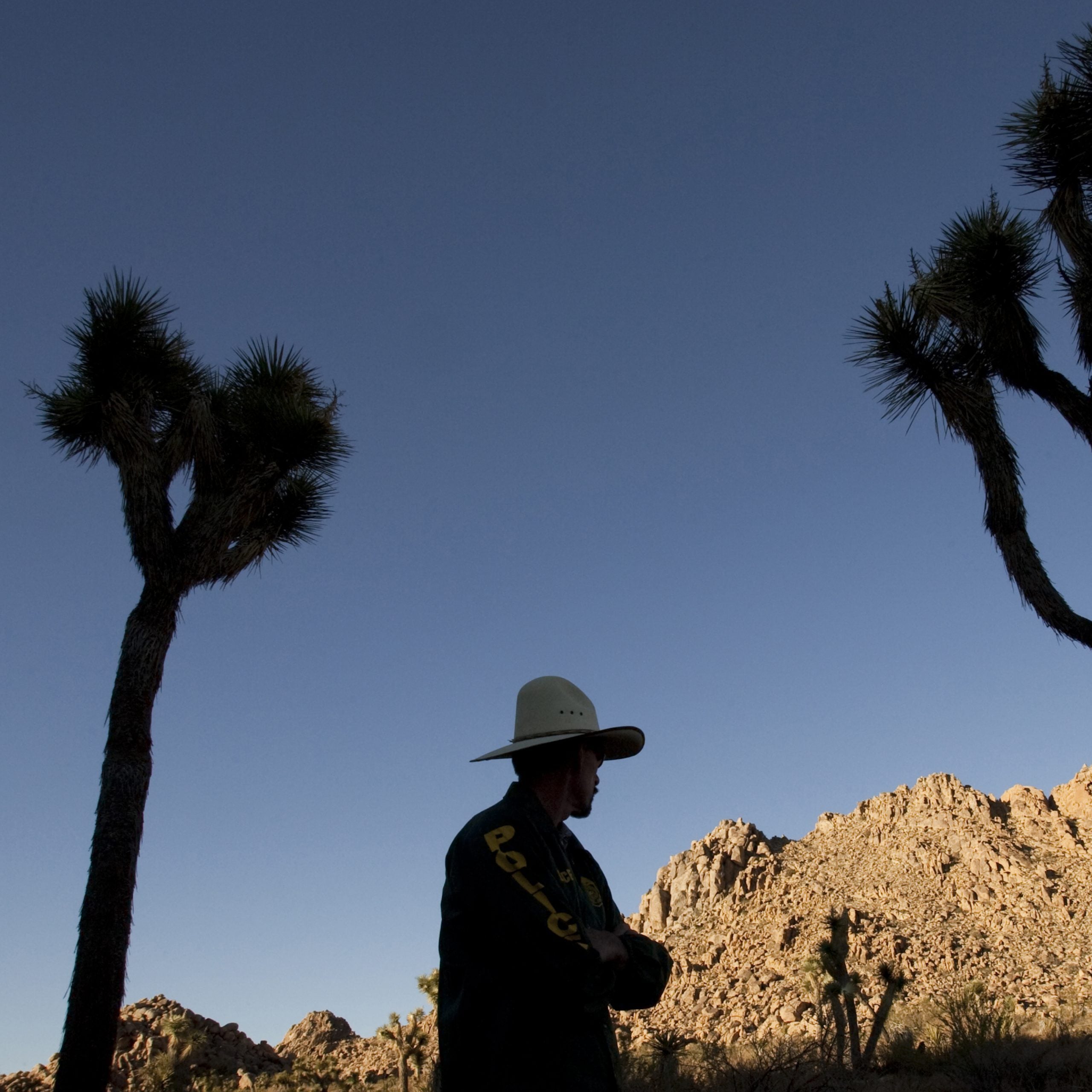You’ve heard the number before. The National Park Service has $11.9 billion worth of maintenance that it has put off indefinitely because the agency doesn’t have the means to cover it. This huge tab—officially called the deferred maintenance backlog—has become a blunt instrument in Washington, a way for anti–public lands congressmen and outside groups to pressure the parks to sell off acreage and a compelling excuse for administrators to . Congress allocates the Park Service only about $3.25 billion a year, so without radical change, critics say, how can the Park Service ever get a handle on this backlog?
A from the Center for American Progress (CAP) sheds new light on the Park Service’s mammoth burden. The problem is real—you only have to look at the crumbling ceiling of the Jefferson Memorial or the , both of which the Park Service manages—but according to Nicole Gentile, deputy director for public lands for the CAP and co-author of the report, the seriousness of the backlog is being overstated. “Undoubtedly they need more money, but [the backlog] is bloated,” Gentile says.
Unpacking the backlog is critical to combating efforts to cut park funding. “Anti-conservation members of Congress are using this backlog to argue against the parks, calling it an ‘insurmountable number,’” Gentile says. “They’re calling for the privatization of our parks, which is very scary. They’re arguing against protecting any new natural areas because we can’t take care of what we have.”
Here are the four things you should understand about the backlog, plus what’s really at stake.

Half the Tab Is for Roads
The NPS isn’t just in charge of keeping trails clear and visitor centers clean. It’s also tasked with upkeep for the more than that crisscross the system’s 417 protected parks and monuments. Work to keep these paved roads in order makes up almost half of the Park Service’s backlog. Paved roads account for $5.9 billion of the backlog, Gentile says, and just four roads alone account for $1.3 billion of the total. (The whoppers include George Washington Memorial Parkway, a 25-mile highway along the Potomac; the Natchez Trace Parkway, a 444-mile route that follows a historic trail from Mississippi to Tennessee; the John D. Rockefeller Jr. Memorial Parkway, a scenic route connecting Grand Teton and Yellowstone National Parks; and the Blue Ridge Parkway, a scenic 469-mile jaunt through Appalachia.)
The kicker, Gentile says, is that congressional funding to cover transportation inside the parks usually comes from different bills than the rest of the maintenance needs—and therefore probably doesn’t have to be included in the backlog number. By inflating the backlog with “bloat” from road maintenance, “the NPS is unwittingly providing evidence that some members of Congress are using to misleadingly argue against protecting more public lands,” the report argues.
Most of the Backlog Isn’t Critical
The need for maintenance in the park is very real. “We’ve got 25,000 buildings to take care of in all the national parks,” says Phil Francis, former superintendent of the Blue Ridge Parkway. It’s a huge amount of work, but according to the CAP report, the vast majority of the backlog is stuff the parks needs, but doesn’t exactly need tomorrow. In fact, only $3.5 billion of the backlog is labeled “critical” and dedicated to systems the parks need to function, like sewage and water lines. Of that sum, only $1.3 billion—under 10 percent of the $11.9 total—is considered priority maintenance, meaning work that needs to be done immediately to keep parks open (repairing downed power lines or unsafe structure, for instance).
The deferred maintenance backlog represents every project the Park Service needs money for, not just what needs to be done immediately. “A lot of it would more accurately be described as a wish list,” Gentile says. “I would really love a new bicycle. Do I need one? No, but if somebody offered me one, I’d say yes.”
The Concessionaires Are Guilty, Too
The concessionaires who operate in the national parks have gotten a lot of attention lately, thanks to New York–based Delaware North’s attempt to trademark many of the world-famous names inside Yellowstone National Park. These concession companies, which essentially operate without competition and serve a “captive” audience, are supposed to be on the hook for upkeep of the properties they manage. But Gentile and co-author Matt Lee-Ashley found that $389 million of the NPS backlog is composed of maintenance needs at concessionaire-operated facilities.
Whether the concessionaires have picked up this tab and the $389 million is accidental padding in the backlog or if the NPS expects to pick up the costs its concessionaires are skimping on is unclear, Gentile says. (The Park Service confirmed the number’s accuracy and says maintenance is the concessionaire's responsibility.)
The NPS Can’t Pay for Maintenance Without New Funding
The NPS is not a moneymaking enterprise; managing 84 million acres in 50 states is expensive. Like other government entities, the NPS gets its funding from Congress. Unfortunately for the NPS, its budget has when adjusted for inflation. Of that total, Congress earmarks an average of about $521 million per year for maintenance—or 4 percent of the total backlog—.
Simply put, that will never be enough to pay off the deferred maintenance backlog. Just to keep the backlog from growing, the NPS would need to spend $700 million per year on maintenance, officials estimate. It’s an impossible situation, says Francis, the retired superintendent. “I don’t think it’s fair to have your agency budgets cut through sequestration and to see the number of people responsible for maintaining our 75,000 total assets reduced and then complain that the maintenance backlog is growing,” Francis says.
“We’ve gotten caught up in politics,” he says. “But we need to remember that we’re protecting former presidents’ homes of both political parties, Revolutionary War sites, Gettysburg, the Martin Luther King Jr. Historic Site. This is not a political agency. It’s our history and the beautiful resources we have in this country.”


